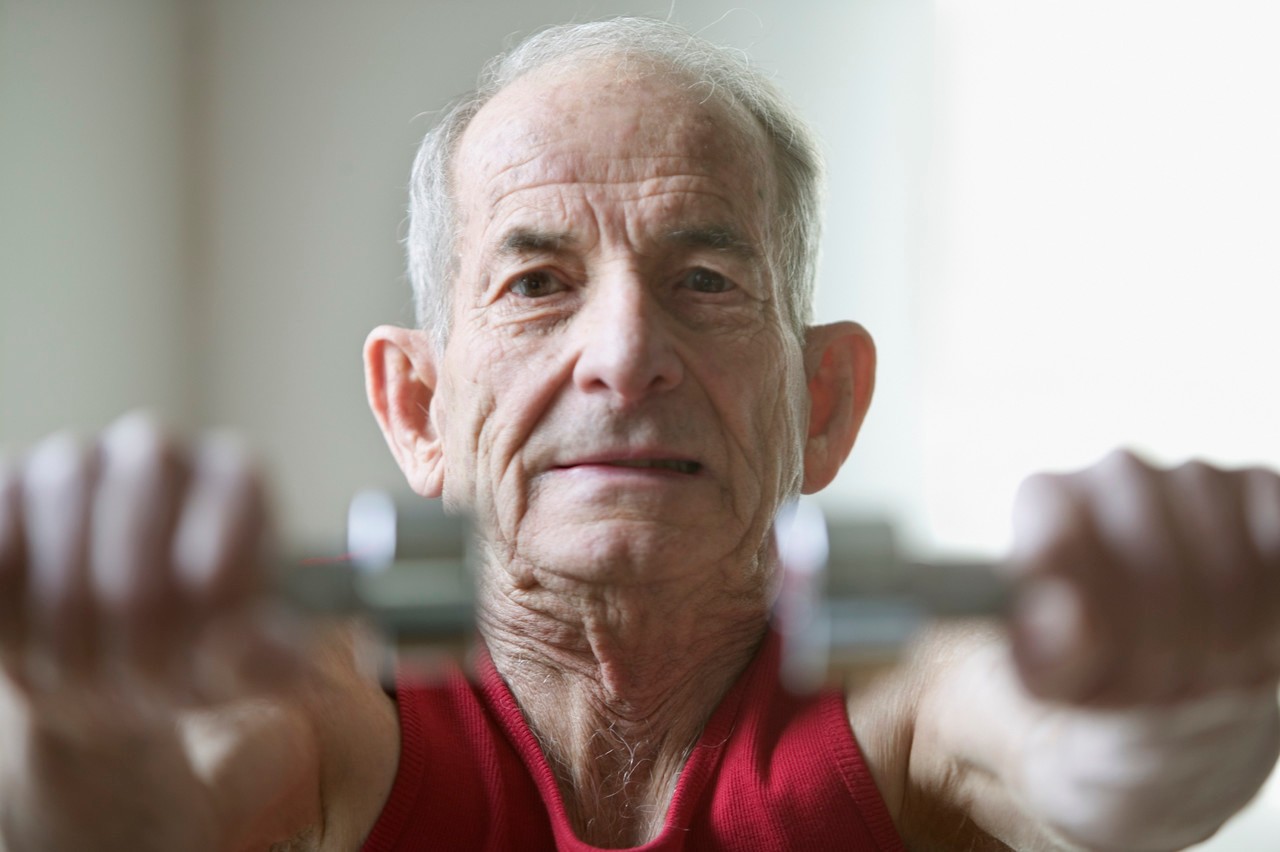How to Maintain Muscle Mass as You Age

Stength training and eating protein do the trick.
If you want to maintain your muscle mass as you age, exercise and protein are the keys.
Age-related muscle decline tends to begin after your early 40s. Studies have shown you lose about 8 percent of muscle mass per decade after that.
YOU MIGHT ALSO LIKE: Strength Training for When You’re Over 50
But, sarcopenia, as it’s known, is not inevitable. “The tool that everyone agrees works to shore up muscles: exercise, at every age. Ideally, that would include both a basic, progressive strength-training program as well as an aerobic fitness routine (like a brisk 30-minute walk every day),” Katherine Hobson writes in U.S. News.
"Healthy muscle is not only about being stronger and bigger," Miriam Nelson, director of the John Hancock Center for Physical Activity and Nutrition at Tufts University, says.
Strength training that builds muscle as you age isn’t for setting Olympic records, but to maintain your balance, keep you from falling, and allow you to do everyday thing things like climb a set of stairs.
Studies suggest that that men who lift weights a few times a week when they hit their 50s and 60s can maintain muscle mass, Nelson says, not just slow the rate of decline.
But they also need aerobic exercise to complement weight lifting in order to store glycogen and have blood vessels that can get it to muscle tissue.
Nutritionally speaking, you need protein to help fuel those workouts and feed the muscles you’re working to maintain.
Though the right amount of high-quality protein you need to eat every day hasn’t really been established, you can estimate your daily requirements, says Frank Lipman, MD, the founder of Eleven-Eleven Wellness Center in New York City.
YOU MIGHT ALSO LIKE: What and When to Eat to Build Muscle
Lipman’s equation: Divide your body weight in half and subtract 10. “The resulting number will give you the approximate amount of protein you should be eating every day,” he says.
For example, if you weigh 160 pounds, then half of that is 80. Subtract 10. “That’s 70 grams of protein spread over the course a day’s worth of meals,” Lipman says. “In short, to slow muscle deterioration, particularly for those heading into their 60s and beyond, high-quality protein is your best weapon.”
Consistent, strength training and aerobic exercise, smart dietary choices, and strategic supplementation – “they’re your ticket to a strong, healthy body,” Lipman adds.
You lose muscle mass and strength in several ways, with “natural physiological shifts taking place that correlate to declines in muscle health,” Andrea N. Giancoli, MPH, RD, writes in the Chicago Tribune.
Those include loss of nerve cells that communicate with your brain to move your muscles, hormonal changes (men lose testosterone, women lose estrogen), impaired blood vessel function, and a slightly more acidic body as your kidneys age. Acid triggers protein breakdown, Tufts University’s Nelson says.
The good news is that becoming active and consuming recommended amounts of protein to supplement that activity can stop the loss of muscle mass and keep you going well into older age.
“A 70-year-old active individual is probably younger from a biomarker standpoint — muscle strength, balance, body composition, blood pressure, cholesterol levels — than a 40-year-old inactive individual,’’ says Nelson.
Her landmark research conducted nearly 20 years ago showed that sedentary postmenopausal women who lifted weights twice a week for a year could increase their muscle strength by about 80 percent.
Florence Reddish, of Jamaica Plain, Mass., told the Boston Globe that at 69, after a year of taking twice-weekly strength training classes, she could her help her elderly neighbor carry heavy shopping bags and navigate train station stairs with ease. She once took them slowly to keep from falling.
“My clothes fit better,’’ she said. “I have biceps now. It’s amazing what these exercises can do.’’
Updated:
April 07, 2020
Reviewed By:
Janet O’Dell, RN